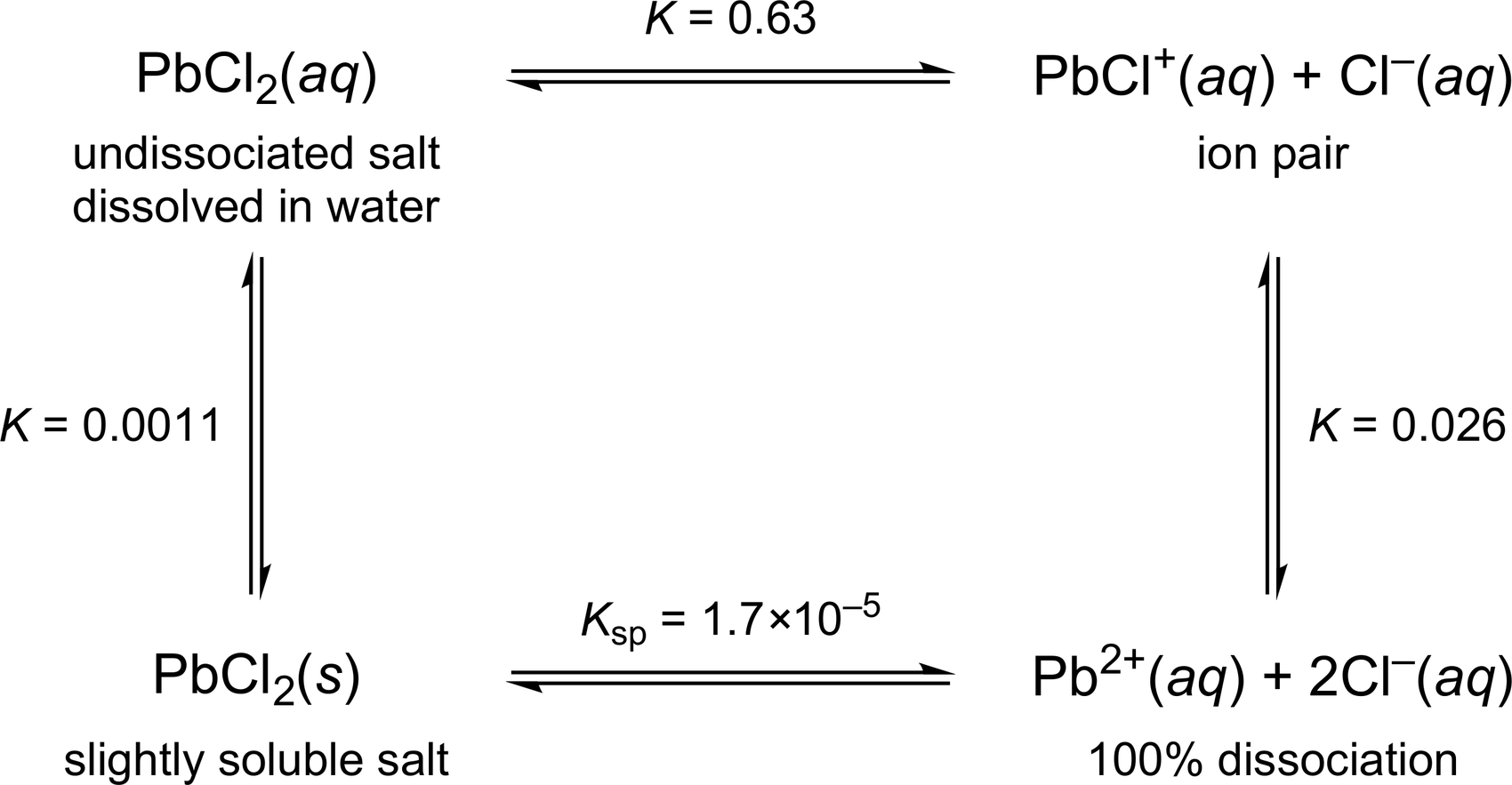Chapter 6 Other Equilibria
Dissolving a solid is more complicated than it seems. At first glance, the dissolution of sodium chloride in water seems very straightforward. The salt dissociates into its constituent cations and anions, assuming complete dissociation.
\[\mathrm{NaCl}(s) \overset{\mathrm{H_2O}}\rightleftharpoons \mathrm{Na^+}(aq) + \mathrm{Cl^-}(aq)\]
Now, consider lead(II) chloride (PbCl2), a slightly soluble salt. When dissolved in water, three different equilibria occur simultaneously, each with their own equilibrium constant.

The solubility product for a substance is the equilibrium constant of the solid undergoing complete dissociation (i.e. dissolution) in water.
\[\mathrm{PbCl_2}(s) \overset{\mathrm{H_2O}}\rightleftharpoons \mathrm{Pb^{2+}}(aq) + \mathrm{2Cl^-}(aq) \quad K_{\mathrm{sp}} = 1.7\times 10^{-5}\]
Ksp values can exist for other solvents.
The solubility product, Ksp, for a substance is related to its solubility. If Ksp is > 1, the substance is quite soluble. If Ksp < 1, the substance is not very soluble.